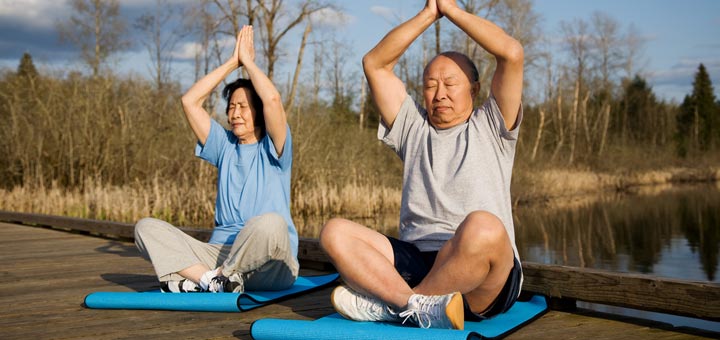What makes you live longer? Is it freezing yourself in a block of ice, or is it drinking the nectar of a secret flower in a far corner of the world? As far as we know, it isn’t either of those things. Living your life a certain way, however, can help you improve mental acuity and keep your body healthy.
Do we live longer now than we did 100 years ago? The short, simple answer is: yes, we do. Life expectancy from birth 100 years ago was about 45-50 years, and now the average person lives to be 75-80. This longevity is not really attributed to healthy lifestyles, though; it is primarily due to medical advancements. Most people rely on these medications and such to keep them alive, rather than focusing on being healthy to help them live longer.
Let us introduce you to blue zones. As part of a large-scale anthropologic and demographic project, Dan Buettner visited five areas all over the world to document people, who were most likely to live over 100 years. What did he learn from these five areas? He learned that the people are much happier, healthier, and have a more positive outlook on life.
The most impressive thing about these blue zones is that the quality of life does not diminish as people age. These people aren’t decrepit vegetables, who can’t be active and need round the clock help to go about their days. They grow older in a healthier way, having decreased risks of developing cancers, Alzheimer’s disease, dementia, osteoporosis, and heart disease.
The Five Blue Zones Include:
- Ikaria, Greece
- Okinawa, Japan
- Loma Linda, CA
- Sardinia, Italy
- Nicoya, Costa Rica
What can we learn from the people in these regions? Check out the key lessons, below.
Maintain A Healthy Weight By Listening To Your Body
Americans have developed the habit of overeating. People in Okinawa, Nicoya, and Sardinia have not had the chance to develop this habit. They have been careful not to overeat or waste food because that takes away from what other family members can eat. People in Okinawa actually practice eating until they are 80% full, and they eat 3-4 times more vegetables than the average Americans. Most blue zone residents get a full night’s sleep (roughly eight hours), which helps them control stress and hunger cravings.
Learn To Appreciate Whole, Real Foods
The people, who live in these blue zones, are not typically vegetarians, but they do follow a diet rich in plant-based foods. Additionally, most of these fruits and vegetables are grown locally or homegrown and free of genetically modified organisms. The protein source tends to be fresh fish or high quality, grass-fed meat, and these aren’t eaten every day. The foods that are popular in blue zones include:
- Fruits & Vegetables
- Herbs
- Legumes
- Olive Oil
- Fermented Products (kefir, tempeh, miso, and natto)
- Whole Grains (barley wheat or durham wheat)
Spend More Time With Family And Go Outside
In Loma Linda, CA, there is a large Seventh-day Adventist community and they dedicate a weekly 24-hour Sabbath to spend time with family and focus on God, nature, and friendships. This helps to relieve stress and strengthens familial and social ties. It is recommended to do activities with the whole family, be they board games or hikes, to help you live longer.
Exercise, But Make It Enjoyable
People get so self-conscious in gyms, making exercise unproductive or unsatisfactory. In blue zones, on the other hand, people don’t exercise in gyms. They lead active lives, walking most places and doing chores with their hands instead of using machines. They also enjoy outdoor exercises like yoga, Tai Chi, or engage in outdoor sports with friends.
Avoid Processed, Packaged Foods
One of the most notable findings in blue zone diets is that they are incredibly low in pesticides, artificial ingredients, and sugar. The Standard American Diet, duly named SAD, is full of all of those things and more. While most people have been conditioned to eat packaged and processed foods, try to go for fresh foods to live healthier and longer.

Vincent Stevens is the senior content writer at Dherbs. As a fitness and health and wellness enthusiast, he enjoys covering a variety of topics, including the latest health, fitness, beauty, and lifestyle trends. His goal is to inform people of different ways they can improve their overall health, which aligns with Dherbs’ core values. He received his bachelor’s degree in creative writing from the University of Redlands, graduating summa cum laude. He lives in Los Angeles, CA.






















